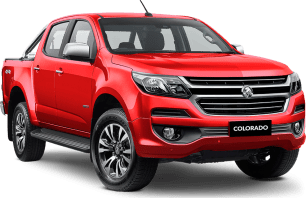“We see it as performance, just a different kind of performance.” That's the word from HSV on its updated SportsCat, an obvious nod to the fact that this Colorado-based ute is missing the one key attribute that defined HSVs of old - more power.
Instead, it’s intended to strike a balance between on-road manners and off-road chops, with HSV changing the suspension and brakes to get the best of both those worlds.
It’s easy to write all of that off as marketing guff, but after a day spent putting the HSV through its paces at Holden’s proving ground outside Melbourne, you can’t help but think they’ve somehow managed it.
One of the Colorado’s best features is its easy-going nature when driven on the road, with Holden’s engineering team tweaking the ride and handling to produce a car-like feeling on Australia’s mostly dodgy road surfaces.
And the good news here is that HSV hasn't changed that feeling - they have enhanced it.
Pushing the SportsCat to above the legal speed limit on a track designed to mimic a genuine road saw the newest HSV acquit itself surprisingly well. A sports car this ain’t, and yet the ride especially manages to blend comfort with control, sitting mostly flat through bends and leaving you confident you're going to burst out the other side of a corner roughly where you were expecting to.
The steering still has that vagueness common to off-road-focused vehicles, but Holden’s tuning arm has produced a confident, composed drive experience, which does elevate the base Colorado's sportiness.
Perhaps most impressive, though, is the SportsCat’s ability to switch from road to rough track, pushing through an off-road course every bit as challenging as a car like this will ever get asked to face, without so much as breaking a sweat. From water crossings to wheel-articulating bumps and steep, muddy hill climbs, the SportsCat devoured all with serious ease.
There are some drawbacks, of course. The engine can feel loud and gruff, especially when really pushed, and it produces not much in the way of top-end speed for all its fanfare. The low-end nature of the diesel engine ensures the SportsCat feels punchy enough on take-off, but it quickly runs out of puff, and the climb from around 65km/h to 100km/h does feel like it's taking its sweet time.
But despite all the HSV stickers, you can't lose sight of the fact that this is still a ute, and one that can carry, tow and tackle an off-road run, and so you still find yourself pleasantly surprised by the performance on offer, rather than disappointed by the lack of speed.

